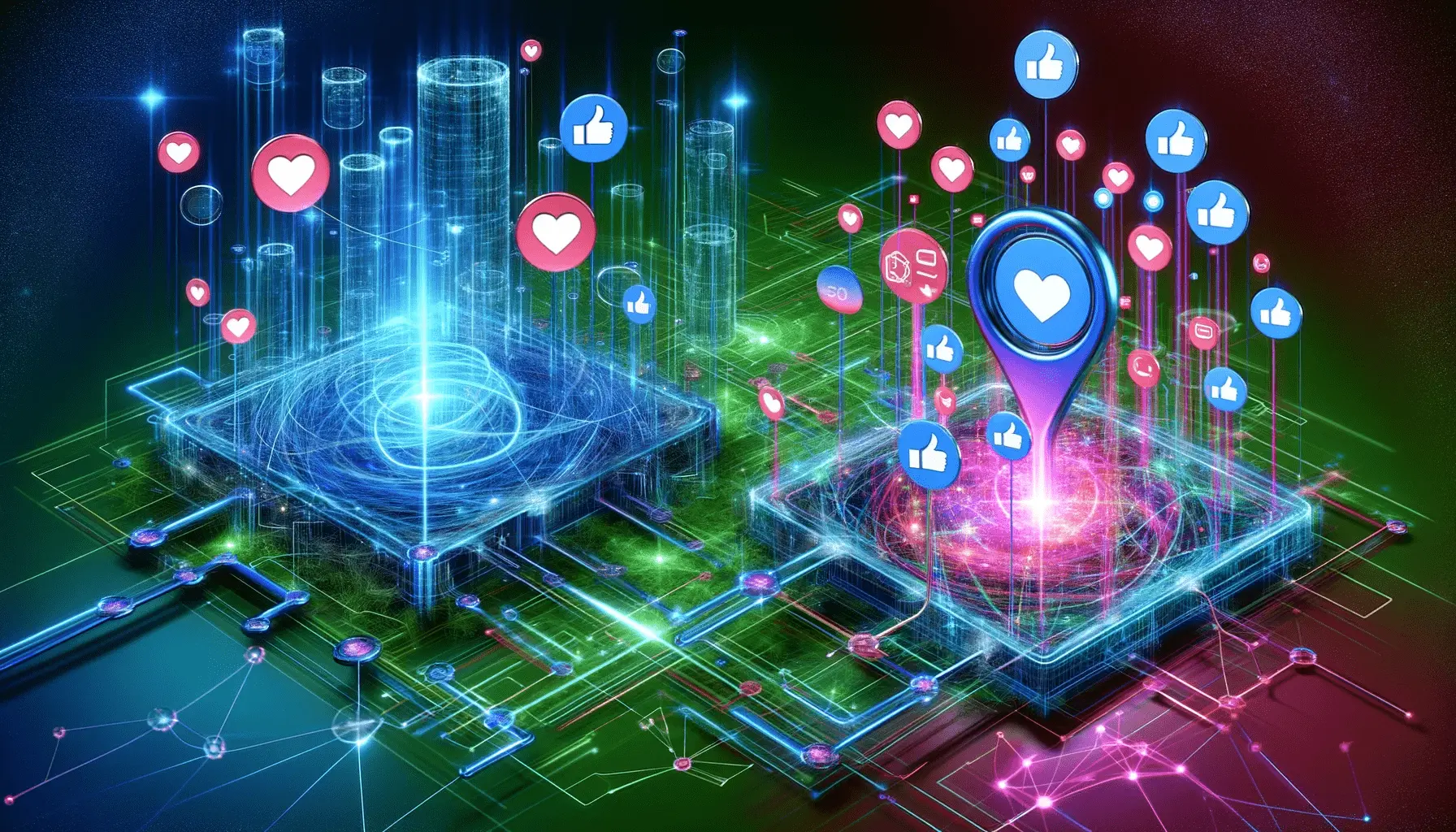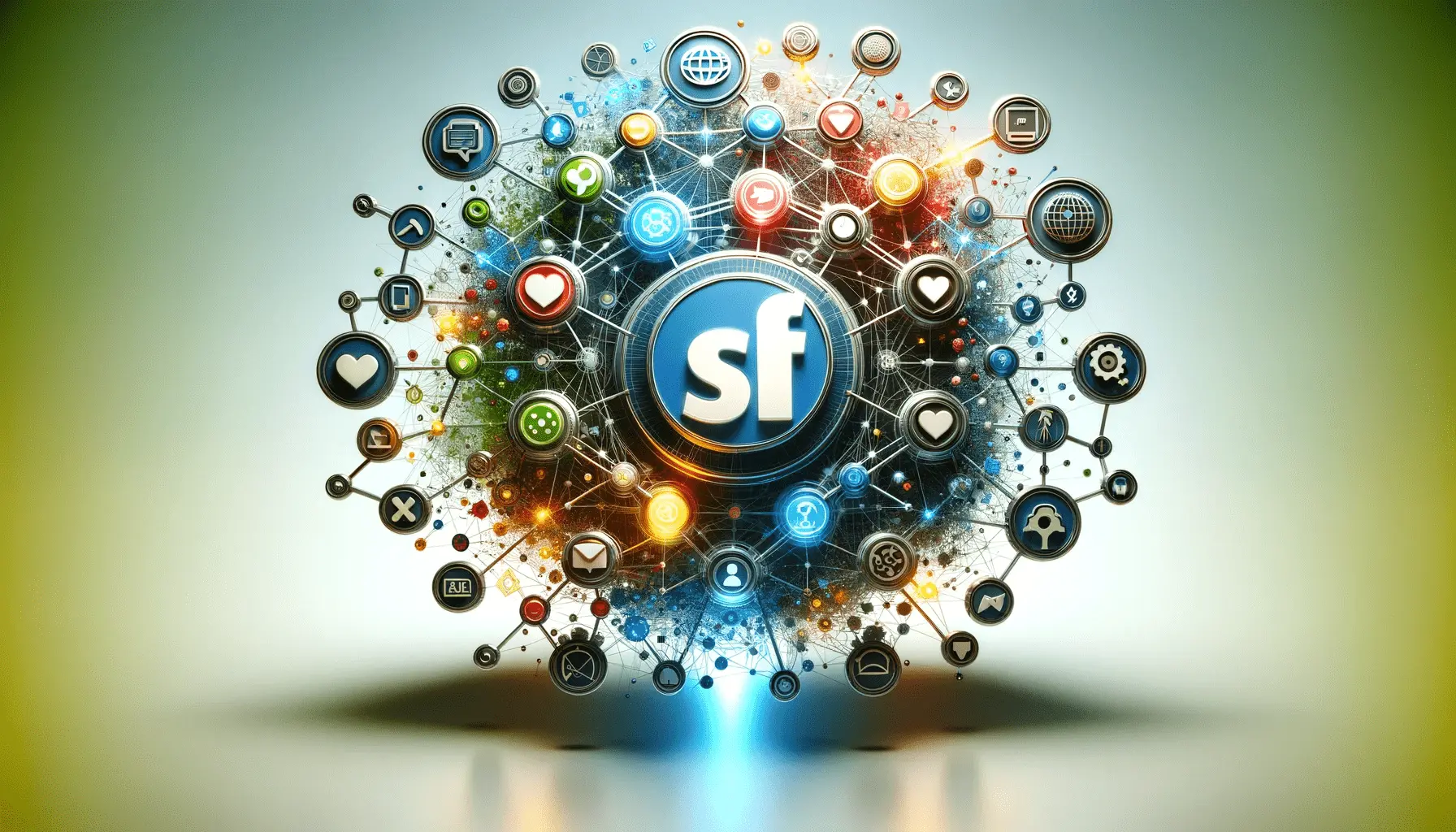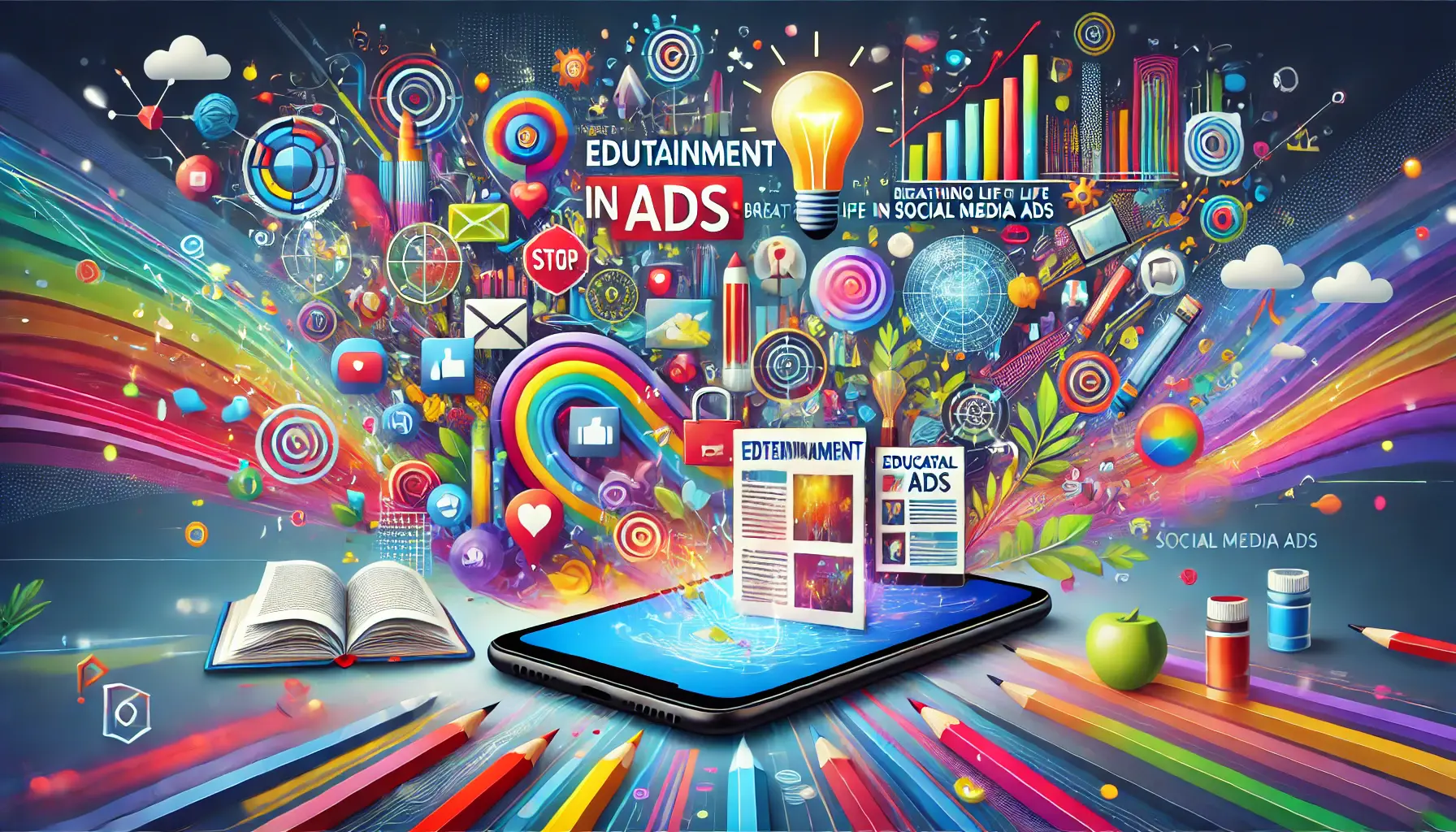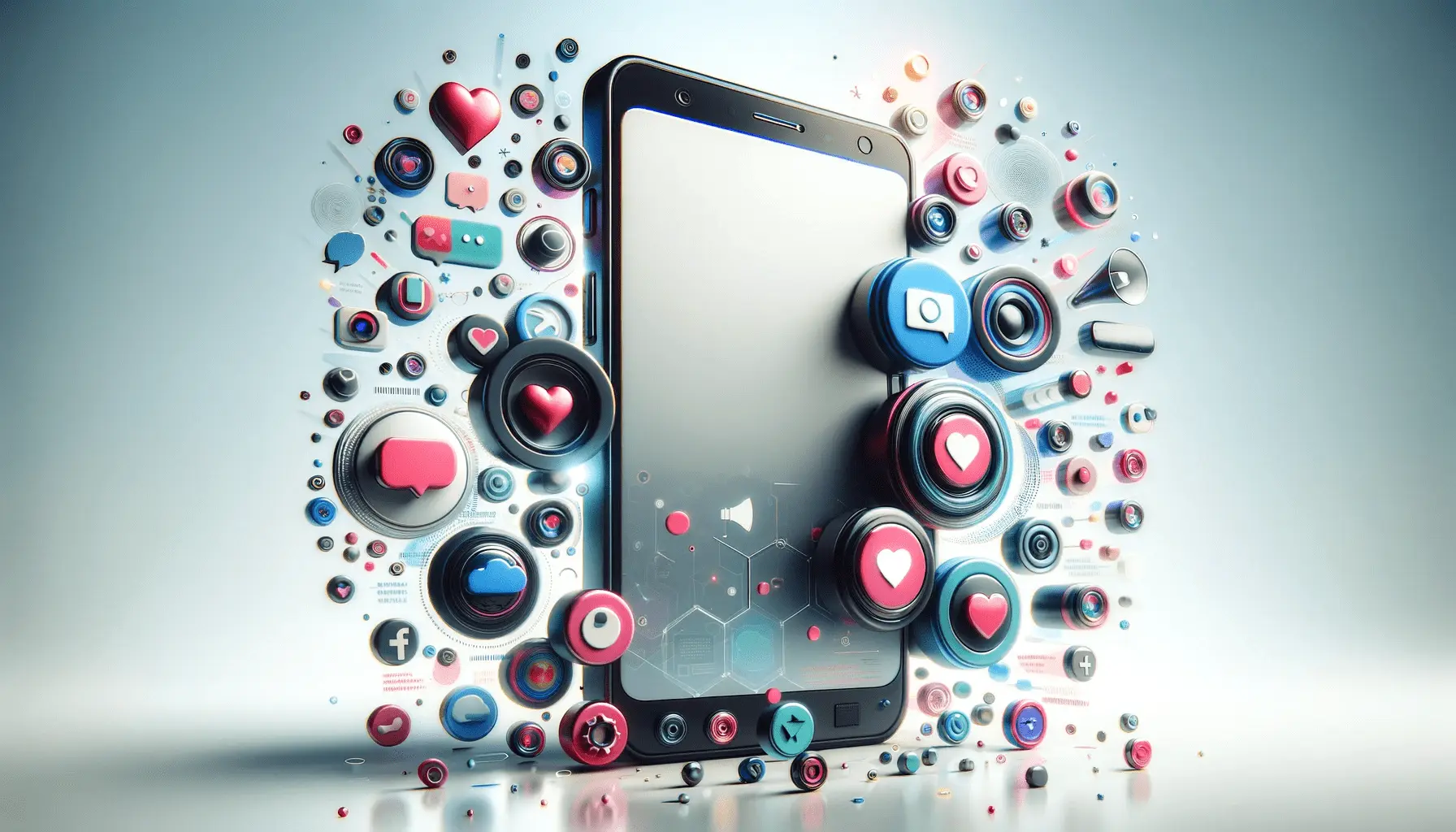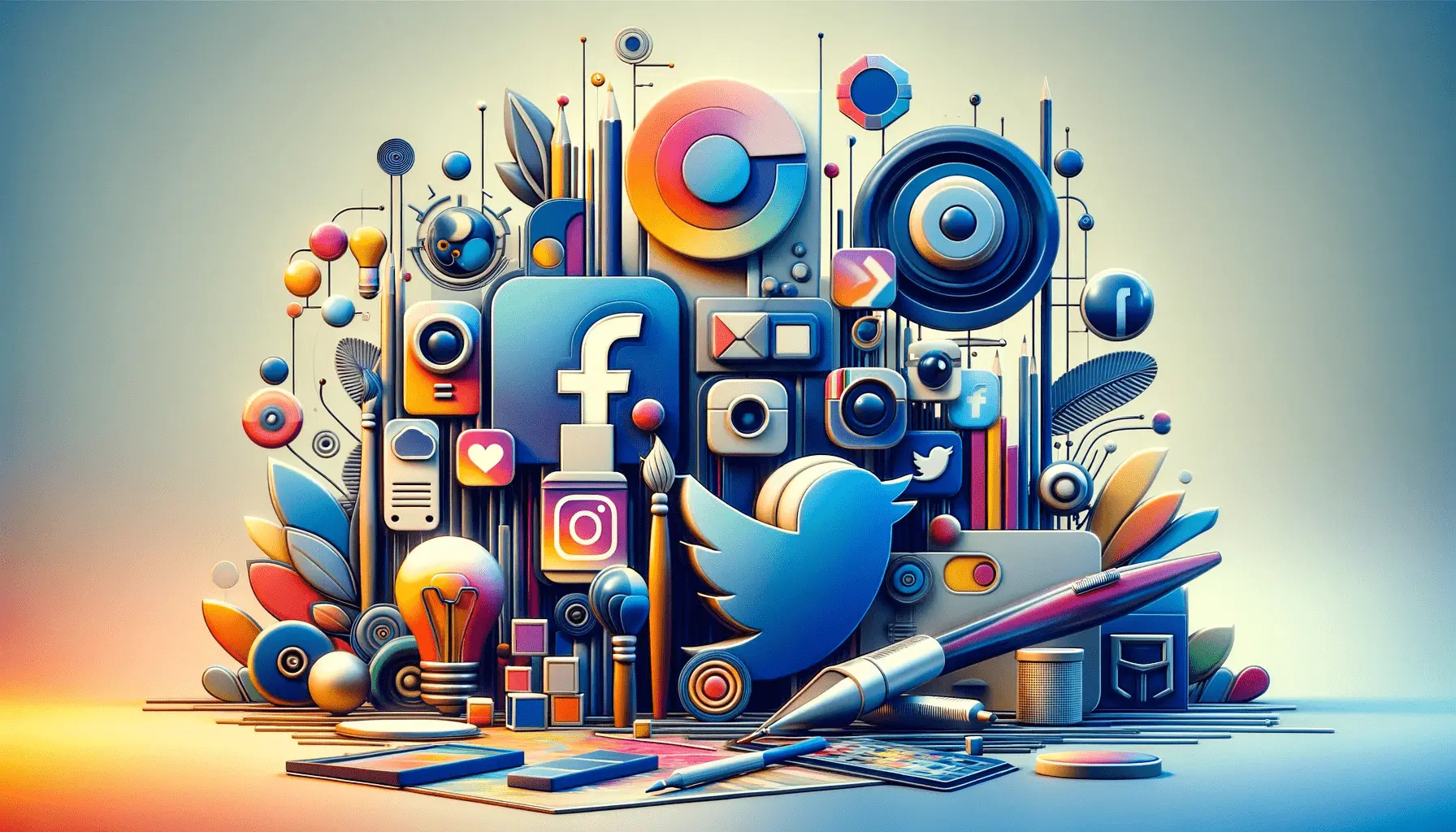As we delve into the dynamic world of social media advertising, it’s evident that visual trends play a pivotal role in shaping how brands communicate with their audience.
The realm of social media is a canvas for creativity, where visual innovation not only captures attention but also conveys messages in the most impactful way.
In this comprehensive exploration, we will uncover the essence of visual trends in social media ads, highlighting how they revolutionize brand storytelling and audience engagement.
The significance of visual trends in social media advertising cannot be overstated.
In an era where digital content is consumed at an unprecedented rate, standing out in the crowded social media landscape is crucial for brands.
Visual trends offer a unique language of communication, blending aesthetics with strategy to create compelling narratives that resonate with viewers.
From the use of bold colors and innovative designs to the integration of cutting-edge technologies, these trends are redefining the boundaries of digital advertising.
- Emergence of 3D Design in Social Media Ads
- Revival of Retro and Nostalgic Themes in Social Media Advertising
- Embracing Minimalism and Simplicity in Social Media Visuals
- Integrating Motion Graphics and Animation in Social Ads
- Exploring the Power of User-Generated Content in Social Media Ads
- Leveraging Influencer Collaborations in Social Media Visuals
- Adopting Augmented Reality and Virtual Reality in Social Ads
- Conclusion: Harnessing Visual Trends for Impactful Social Media Advertising
- FAQs on Visual Trends in Social Media Ads
Emergence of 3D Design in Social Media Ads
One of the most striking visual trends in recent times is the adoption of 3D design in social media ads.
This trend has transformed the way products and services are presented, offering a more immersive and engaging experience to the audience.
3D imagery brings depth and realism to social media content, allowing brands to showcase their offerings in a more lifelike and interactive manner.
This not only enhances the visual appeal but also aids in better product understanding and customer engagement.
Brands leveraging 3D design in their social media campaigns have witnessed a significant increase in user interaction and engagement.
The three-dimensional aspect adds a novel and captivating element to the ads, making them stand out in a user’s feed.
This trend is particularly effective in industries where visual representation plays a key role, such as fashion, interior design, and technology.
Utilizing 3D Design for Product Showcases
3D design is particularly beneficial for product showcases on social media.
It allows brands to present their products in a dynamic and detailed manner, offering viewers a 360-degree view.
This not only enhances the visual quality of the ads but also provides a more comprehensive understanding of the product.
For instance, a furniture brand can use 3D design to display the intricate details of its products, helping potential customers visualize the items in their own space.
Moreover, 3D design in social media ads can be a game-changer for online shopping experiences.
It bridges the gap between online and in-store shopping by providing a realistic view of the products.
Customers can get a better sense of the size, texture, and quality of the products, leading to more informed purchasing decisions.
Key Point: The integration of 3D design in social media ads not only enhances the aesthetic appeal but also plays a crucial role in improving customer engagement and product understanding.
Revival of Retro and Nostalgic Themes in Social Media Advertising
The resurgence of retro and nostalgic themes has become a prominent visual trend in social media advertising.
This trend taps into the emotional connection of the audience, evoking memories and feelings of yesteryears.
By integrating elements from the past, brands create a sense of familiarity and comfort, which can be incredibly effective in capturing the audience’s attention and fostering brand loyalty.
Retro themes often include visual elements from the 60s, 70s, 80s, or 90s, depending on the target demographic.
These can range from color palettes and typography to graphic styles and cultural references.
The key to successfully implementing this trend lies in striking a balance between nostalgia and modernity, ensuring that the content resonates with both older and younger audiences.
Implementing Retro Elements in Modern Campaigns
- Color Palettes: Utilizing vintage color schemes can instantly give a retro feel to social media ads. Brands often choose muted tones or specific color combinations reminiscent of a particular era.
- Typography: The use of vintage fonts or typographic styles can transport viewers back in time. This could be the bold and funky fonts of the 70s or the pixelated text from the 80s.
- Graphic Styles: Incorporating design elements like grainy textures, faded filters, or hand-drawn illustrations can add an authentic retro touch to the visuals.
- Cultural References: Referencing popular culture from past decades, such as iconic movies, music, or fashion, can create a strong emotional connection with the audience.
Case Studies: Successful Retro-Themed Campaigns
Several brands have successfully leveraged retro themes in their social media campaigns.
For example, a fashion brand might launch a vintage collection inspired by the 80s, using social media ads that feature classic arcade games or neon lights to evoke that era.
Similarly, a music streaming service could create ads with visuals and playlists that pay homage to the 90s, resonating with audiences who cherish that decade’s music.
These campaigns not only stand out visually but also create a narrative that audiences find relatable and engaging.
The key is to evoke nostalgia without appearing outdated, blending the old with the new to create something uniquely appealing.
Note: The effectiveness of retro and nostalgic themes in social media ads lies in their ability to evoke emotions and memories, making the brand more relatable and memorable to the audience.
Embracing Minimalism and Simplicity in Social Media Visuals
In contrast to the vibrant and elaborate designs, minimalism has emerged as a powerful visual trend in social media advertising.
This trend focuses on simplicity, clean lines, and a muted color palette, emphasizing the ‘less is more’ philosophy.
Minimalist designs are not just aesthetically pleasing but also effective in conveying clear and concise messages to the audience.
Minimalism in social media ads is characterized by its uncluttered and sleek design elements.
This approach is particularly appealing in today’s fast-paced digital world, where viewers often prefer content that is easy to digest and visually calming.
Brands adopting this trend can communicate their message effectively without overwhelming their audience with excessive visual elements.
- Key Characteristics of Minimalist Design:
- Subtle Color Schemes: Utilizing a limited color palette, often with neutral or pastel tones, to create a serene and harmonious visual experience.
- Clean Typography: Choosing simple and readable fonts that complement the overall minimalist aesthetic.
- Ample White Space: Incorporating plenty of white or negative space to create a sense of openness and focus on the main content.
- Simple Imagery: Using straightforward and unembellished images or graphics that align with the brand’s message.
Impact of Minimalism on Brand Perception
Minimalism in social media ads can significantly impact how a brand is perceived by its audience.
This design trend often conveys a sense of sophistication, elegance, and modernity.
Brands that use minimalist visuals are often viewed as more professional and trustworthy.
For instance, a luxury skincare brand might use minimalist design in its social media ads to highlight the purity and quality of its products, thereby appealing to an audience that values elegance and simplicity.
Moreover, minimalist designs can enhance the user experience by making the content more accessible and easier to navigate.
This is particularly important in social media, where users are bombarded with a plethora of information.
A minimalist ad can serve as a visual respite, drawing the viewer’s attention directly to the key message or product.
Idea: Minimalism in social media advertising is not just a visual choice but a strategic approach to convey brand values and messages in a clear, sophisticated, and impactful manner.
Integrating Motion Graphics and Animation in Social Ads
The use of motion graphics and animation has become a game-changer in social media advertising.
This trend capitalizes on the dynamic nature of social platforms, offering an engaging and interactive way to capture the audience’s attention.
Motion graphics and animations add a layer of excitement and energy to social media ads, making them more memorable and effective in conveying messages.
Animations in social media ads range from subtle movements to complex animated narratives.
They can be used to illustrate concepts, tell stories, or simply add an element of fun to the ads.
The versatility of animation makes it suitable for various types of content, from product demonstrations to brand storytelling.
- Benefits of Using Animation in Social Media Ads:
- Increased Engagement: Animated ads are more likely to catch the viewer’s eye, leading to higher engagement rates.
- Enhanced Storytelling: Animation can bring stories to life, making them more relatable and impactful.
- Greater Flexibility: With animation, brands are not limited by real-world constraints, allowing for more creative freedom.
Effective Strategies for Implementing Animation
To effectively integrate animation into social media ads, brands should focus on creating content that aligns with their message and audience.
For example, a tech company might use sleek and modern animations to showcase the features of a new product.
On the other hand, a brand with a playful image might opt for colorful and whimsical animations to connect with its audience.
It’s also important to consider the platform and format when designing animated ads.
Short and snappy animations work well for platforms like Instagram and TikTok, where users are scrolling quickly through their feeds.
Longer, more detailed animations might be more suitable for platforms like YouTube or Facebook, where users are more likely to spend time watching longer content.
Truth: Motion graphics and animation in social media ads not only enhance the visual appeal but also play a crucial role in storytelling, making complex messages more digestible and engaging.
Exploring the Power of User-Generated Content in Social Media Ads
User-Generated Content (UGC) has emerged as a powerful trend in social media advertising, offering authenticity and relatability that resonate deeply with audiences.
UGC refers to content created by customers, such as photos, videos, reviews, or testimonials, which brands then feature in their advertising.
This trend capitalizes on the genuine experiences of real users, providing a level of credibility that professionally produced content often can’t match.
Integrating UGC in social media ads allows brands to showcase their products or services through the lens of their customers.
This not only enhances trust but also provides potential customers with relatable and realistic portrayals of what they can expect.
UGC acts as a form of social proof, demonstrating the value and popularity of a brand’s offerings.
- Strategies for Leveraging UGC in Social Media Ads:
- Encourage Sharing: Brands can encourage their customers to share their experiences on social media, using specific hashtags or tagging the brand.
- Curate and Feature: Selecting the best UGC and featuring it in social media campaigns can create a sense of community and appreciation among customers.
- Combine with Professional Content: Blending UGC with professionally created content can provide a balanced and comprehensive portrayal of the brand.
Case Studies: Successful UGC Campaigns
Several brands have successfully harnessed the power of UGC in their social media advertising.
For instance, a beauty brand might create a campaign featuring customer photos and reviews of their products, showcasing real results and diverse beauty.
Similarly, a travel company could use UGC to share authentic travel stories and experiences, making their offerings more enticing to potential travelers.
These campaigns not only provide social proof but also foster a sense of community among the brand’s customers.
By highlighting real stories and experiences, brands can create a more engaging and trustworthy image, which is crucial in the competitive social media landscape.
Featured Info: User-Generated Content in social media ads bridges the gap between brands and consumers, offering a platform for real stories and experiences that enhance trust and engagement.
Leveraging Influencer Collaborations in Social Media Visuals
In the realm of social media advertising, influencer collaborations have become a cornerstone strategy.
Influencers, with their dedicated followings and perceived authenticity, can significantly amplify a brand’s message and reach.
By partnering with influencers, brands can tap into their creative storytelling and visual prowess, making their social media ads more relatable and appealing to a broader audience.
Influencer collaborations vary from product endorsements and reviews to creative content creation that aligns with the influencer’s style and the brand’s image.
The key to successful influencer collaborations lies in choosing the right influencers whose audience, values, and aesthetics align with the brand’s target market and brand ethos.
- Effective Approaches to Influencer Collaborations:
- Authentic Partnerships: Collaborating with influencers who genuinely resonate with the brand’s products or values can lead to more authentic and effective promotions.
- Creative Freedom: Allowing influencers to create content in their unique style can result in more engaging and original ads.
- Diverse Influencers: Partnering with a diverse range of influencers can help brands reach different segments of their target audience.
Impact of Influencer Collaborations on Brand Image
Influencer collaborations can significantly impact a brand’s image and perception.
When done right, these collaborations can enhance the brand’s credibility, increase its appeal to younger demographics, and create a sense of aspiration around the brand.
For example, a fashion brand collaborating with a well-known fashion influencer for a social media campaign can not only showcase the brand’s latest collection but also associate the brand with the influencer’s style and popularity.
Moreover, influencer collaborations can lead to higher engagement rates, as followers of the influencers are more likely to interact with content featuring someone they trust and admire.
This can result in increased brand awareness, higher conversion rates, and ultimately, a stronger online presence.
Note: Influencer collaborations in social media advertising harness the power of trusted voices to create visually appealing and relatable content that resonates with a wider audience.
Adopting Augmented Reality and Virtual Reality in Social Ads
The integration of Augmented Reality (AR) and Virtual Reality (VR) technologies in social media advertising marks a significant leap in how brands engage with their audience.
These technologies offer immersive and interactive experiences, taking visual storytelling to new heights.
AR and VR in social media ads allow users to experience products and services in a more engaging and interactive way, often leading to a deeper connection with the brand.
AR and VR can be used in various ways in social media advertising.
For instance, AR filters and lenses can allow users to virtually try on products like glasses, makeup, or even clothing.
VR experiences can transport users to different places or scenarios, providing a unique way to showcase travel destinations, real estate, or even virtual events.
- Advantages of AR and VR in Social Media Ads:
- Enhanced Engagement: AR and VR experiences are novel and engaging, encouraging users to spend more time interacting with the ad.
- Improved Product Visualization: These technologies allow users to see and experience products in a more realistic way, aiding in their decision-making process.
- Innovative Brand Image: Adopting AR and VR in advertising can position a brand as innovative and forward-thinking.
Implementing AR and VR in Social Media Campaigns
To effectively implement AR and VR in social media campaigns, brands need to consider the user experience and the technology’s relevance to their product or service.
For example, a beauty brand might use AR to let customers try on different makeup looks, while a travel company could use VR to give potential travelers a virtual tour of a destination.
It’s also important for brands to ensure that these experiences are accessible and easy to use.
AR and VR should enhance the ad’s message and not detract from it.
When done correctly, AR and VR can create memorable experiences that not only entertain users but also bring them closer to the brand.
False Information: Contrary to some beliefs, AR and VR in social media advertising are not just gimmicks but powerful tools for creating immersive and interactive brand experiences.
Conclusion: Harnessing Visual Trends for Impactful Social Media Advertising
The landscape of social media advertising is continually evolving, with visual trends playing a pivotal role in shaping how brands connect with their audience.
From the immersive depth of 3D design to the nostalgic allure of retro themes, these trends offer diverse avenues for creative expression and audience engagement.
The power of minimalism, with its clean and uncluttered aesthetics, contrasts beautifully with the dynamic and engaging nature of motion graphics and animations, demonstrating the versatility of visual trends in catering to different brand narratives and audience preferences.
User-Generated Content and influencer collaborations have emerged as authentic strategies, bridging the gap between brands and consumers through relatable and trustworthy content.
Meanwhile, the integration of cutting-edge technologies like Augmented Reality and Virtual Reality has opened new frontiers in interactive advertising, offering immersive experiences that captivate and engage users.
These visual trends in social media ads are not just about aesthetic appeal; they are strategic tools that enhance storytelling, amplify brand messages, and foster deeper connections with audiences.
Embracing Innovation and Authenticity
- Innovative Storytelling: Brands must continually explore new and innovative ways to tell their stories, leveraging the latest visual trends to create ads that are not only visually appealing but also emotionally resonant and memorable.
- Authentic Connections: Authenticity remains a key factor in social media advertising. Brands should strive to create content that is genuine, relatable, and reflective of their values, using visual trends to enhance, not overshadow, their message.
- Technological Advancements: Staying abreast of technological advancements, such as AR and VR, and understanding how to integrate them effectively into social media campaigns will be crucial for brands looking to maintain a competitive edge.
In conclusion, the dynamic world of visual trends in social media ads offers a rich tapestry of opportunities for brands to express their uniqueness, connect with their audience, and achieve their marketing objectives.
By skillfully blending creativity with strategy and innovation with authenticity, brands can harness the full potential of these trends to create impactful and successful social media advertising campaigns.
Enjoyed the article? Let its author handle your social media ads. Visit our service page to get started!
FAQs on Visual Trends in Social Media Ads
Understanding visual trends in social media ads is crucial for brands looking to enhance their online presence. Here are some frequently asked questions to provide deeper insights into this dynamic field.
Key trends include 3D design, retro and nostalgic themes, minimalism, motion graphics, user-generated content, influencer collaborations, and the use of AR and VR technologies.
3D design adds depth and realism, making products more immersive and interactive, which enhances user engagement and understanding of the product.
Retro themes evoke nostalgia, creating an emotional connection with the audience and fostering a sense of familiarity and comfort.
Minimalism in ads conveys messages in a clear, concise manner, offering a visually calming and sophisticated aesthetic that appeals to modern audiences.
Motion graphics add dynamism and energy, making ads more engaging and memorable, and are effective for storytelling and complex message delivery.
User-generated content adds authenticity and relatability, acting as social proof and enhancing trust and engagement with the brand.
Influencer collaborations leverage the trust and authenticity of influencers, making ads more relatable and appealing to a broader audience.
AR and VR offer immersive and interactive experiences, making ads more engaging and providing a novel way for users to experience products.



